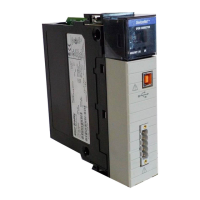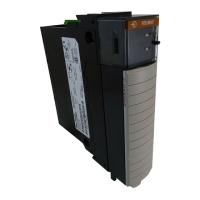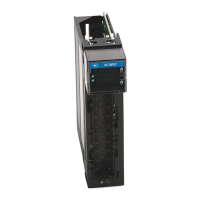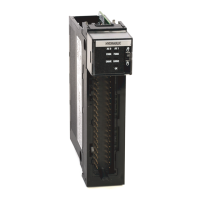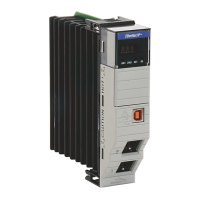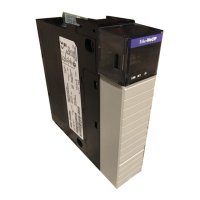Publication 1756-UM514B-EN-P - February 2003
8-18 Using the 1756-DHRIO Module in Remote I/O Applications
Increased Remote I/O
System Throughput
Because of the unique design of the 1756-DHRIO module system,
performance may be greatly enhanced by splitting the remote I/O
adapters across both channels. An example of a simple system has the
following devices:
· Rack 1 - Starting Quarter 0 - Size Full
· Rack 2 - Starting Quarter 0 - Size Full
If both racks are placed on the same channel at a baud rate of
230.4Kbaud, the minimum RPI between the 1756-DHRIO module and
the remote I/O adapters would be 6mS. If the racks are split between
channel A and channel B, the update rate can be decreased to 4.5mS.
The following algorithms are used to calculate various update rates:
@ 230.4Kbaud Update Rate = 3mS*(number of racks [channel A
or B]) + 1/2*3mS*(number of racks [channel A or B])
@ 115.2Kbaud Update Rate = 5mS*(number of racks [channel A
or B]) + 1/2*5mS*(number of racks [channel A or B])
@ 57.6Kbaud Update Rate = 8mS*(number of racks [channel A or
B]) + 1/2*8mS*(number of racks [channel A or B])
Chapter Summary and
What’s Next
In this chapter, you learned about the basics of using remote I/O.
Chapter 9 describes Using RSLogix 5000 in Remote I/O and Block
Transfer Applications.
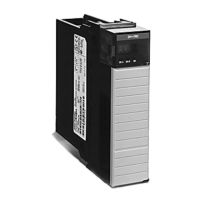
